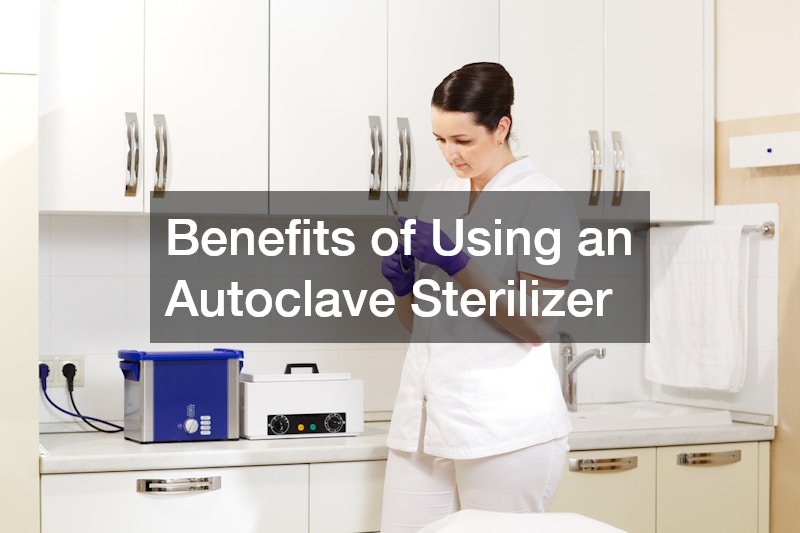Sterilization is becoming increasingly crucial across various industries, as maintaining germ-free environments is paramount for safety and efficiency. An autoclave sterilizer has emerged as an essential tool for achieving consistent and reliable sterilization. These devices leverage advanced technology to ensure that all microbial life is effectively eradicated, providing confidence in sterilization protocols.
How Does an Autoclave Sterilizer Work?
Principle of Steam Sterilization
The core principle of steam sterilization relies on high temperature and pressure to achieve microbial death. Heat denatures proteins, effectively destroying bacteria, viruses, and spores. The high-pressure environment ensures even heat distribution, making this method efficient and reliable.
Steam sterilization is favored for penetrating materials quickly, ensuring comprehensive coverage. By applying heat and moisture, autoclaves sterilize surfaces more thoroughly than dry heat methods. This dual-action approach enhances the speed and reliability of the sterilization process.
Furthermore, steam sterilization is a validated method that meets stringent safety standards in critical industries. Its effectiveness is underscored by its wide use in healthcare, laboratories, and beyond. These attributes reinforce the autoclave’s role as a cornerstone of modern sterilization practices.
Components of an Autoclave Sterilizer
A typical autoclave sterilizer comprises several essential components, each playing a pivotal role in the sterilization process. The chamber is designed to withstand high temperatures and pressures, providing a secure environment for sterilization to occur. The steam generator produces the requisite steam, facilitating the heat and pressure needed.
Integral control systems manage the sterilization cycle, ensuring precision and safety. These systems allow for the customization of cycles based on sterilized materials, offering flexibility in various settings. Together, these components interact seamlessly to deliver reliable sterilization results.
Additional safety features, such as pressure and temperature sensors, are incorporated to protect both operators and materials. Regular maintenance ensures that autoclaves remain in optimal working condition, underscoring their durability. This combination of features highlights why autoclave sterilizers are trusted in diverse applications.
The Sterilization Cycle
The sterilization cycle in an autoclave consists of several phases, each crucial to achieving comprehensive sterilization. Initially, the purge phase removes air from the chamber to allow steam penetration. This step is essential for ensuring effective heat transfer throughout the load.
Next, the exposure period maintains the necessary temperature and pressure to annihilate microorganisms. This stage is tailored based on the size and content of the load, providing versatility across different uses. Throughout this period, conditions are closely monitored to confirm successful sterilization.
Finally, the exhaust phase safely releases pressure and cools the contents before handling. This carefully controlled process prevents damage to sensitive materials while maintaining sterility. By completing these stages, autoclave sterilizers deliver thorough and reliable microbial eradication.
What Are the Key Benefits of Using an Autoclave Sterilizer?
Effective Microbial Elimination
Autoclave sterilizers are renowned for effectively eliminating a wide range of microorganisms. They play a critical role in healthcare settings, where strict sterilization protocols are vital. By ensuring all bacteria, viruses, and spores are destroyed, autoclaves help maintain a safe and sterile environment.
The effectiveness of autoclaves is evidenced by their adoption across industries requiring stringent hygiene standards. These devices assist in infection prevention and control in medical and laboratory settings. Their reliability is underscored by continuous technological innovation, further enhancing their microbial elimination capabilities.
Moreover, autoclaves’ wide temperature and pressure ranges accommodate various sterilization needs. This adaptability ensures comprehensive sterility regardless of the contaminants present. Consequently, institutions can trust autoclaves to deliver secure and consistent sterilization results.
Versatility Across Industries
Autoclaves boast a versatile range of applications, extending beyond healthcare. Laboratories, dental practices, and tattoo parlors benefit from their reliable sterilization. Their adaptability in handling different loads makes them indispensable in diverse environments.
Autoclaves sterilize tools, equipment, and even experimental materials in industrial settings. Their ability to accommodate various materials without compromising efficacy is an asset to multiple sectors. This versatility highlights the broad impact of autoclave sterilizers on maintaining safe practices.
Given the growing emphasis on hygiene, industries are progressively adopting autoclaves to meet compliance standards. This trend underscores the importance of sterilization in safeguarding public health. Consequently, their widespread use exemplifies the necessity of reliable sterilization across multiple fields.

Cost Efficiency and Durability
Investing in autoclave sterilizers yields considerable cost efficiency due to their durability and low operating costs. These devices are designed for prolonged use, reducing the need for frequent replacements. When combined with minimal maintenance requirements, autoclaves offer a sound investment for organizations.
Their energy-efficient operations enhance the cost-effectiveness of autoclaves. Through innovative designs, these devices minimize energy consumption while maximizing output. This streamlined functionality results in continued financial savings over time for users.
Moreover, advancements in autoclave technology have improved energy efficiency and performance. By operating at optimal efficiency, organizations benefit from reduced utility expenses. Together with their durable design, autoclave sterilizers stand out as economically favorable options in sterilization equipment.
Autoclave sterilizers are indispensable in ensuring sterile environments across various sectors. Their ability to eliminate microorganisms effectively is critical to achieving high safety and compliance standards. As industries embrace rigorous sterilization, the role of autoclave sterilizers continues to be paramount in safeguarding public health.

